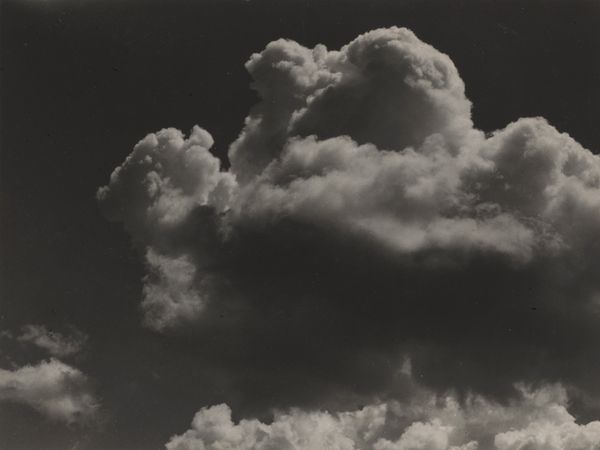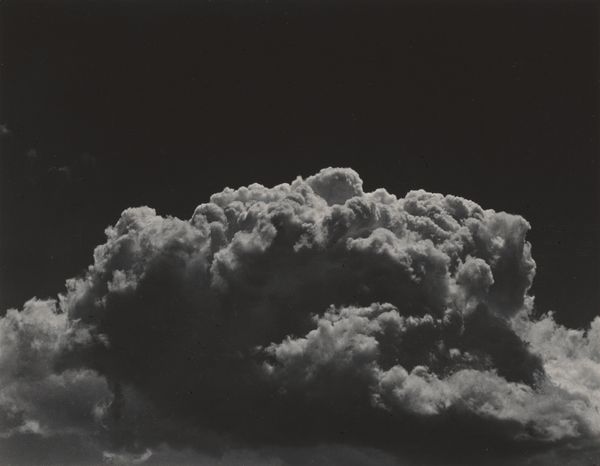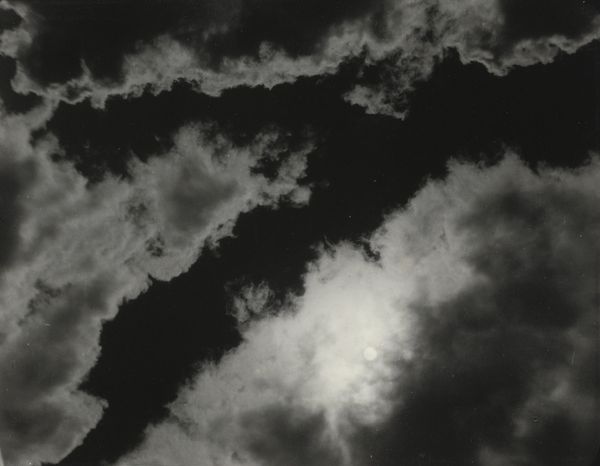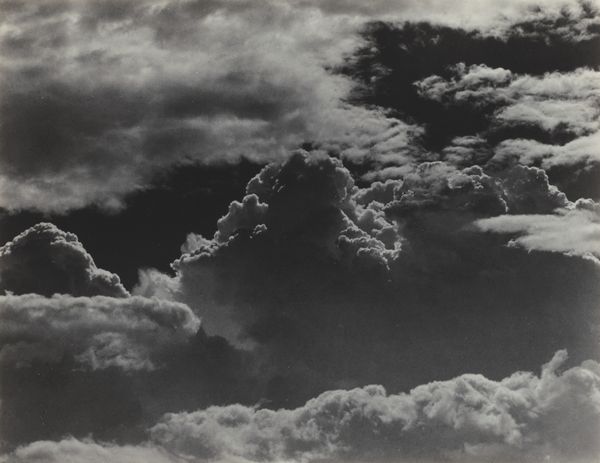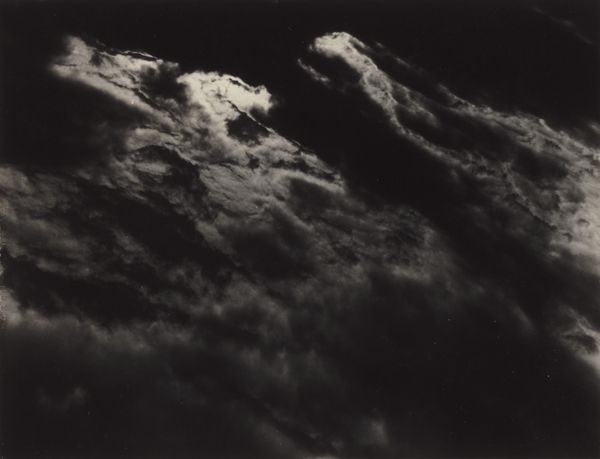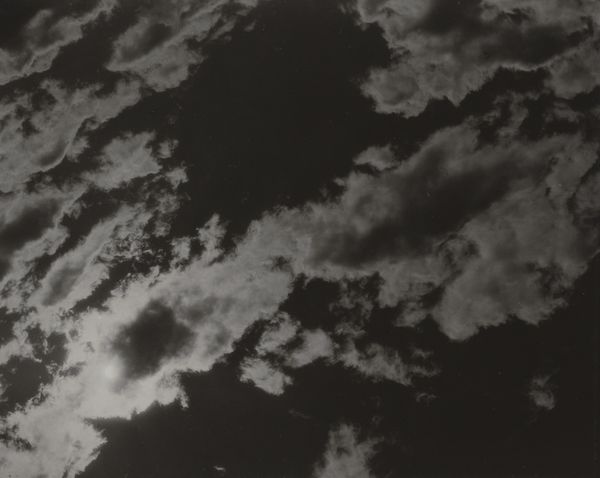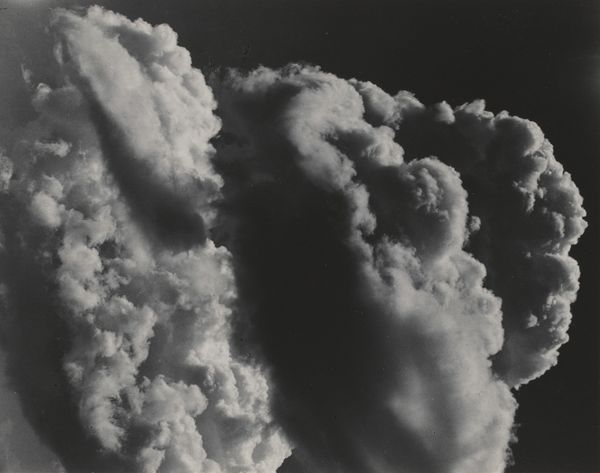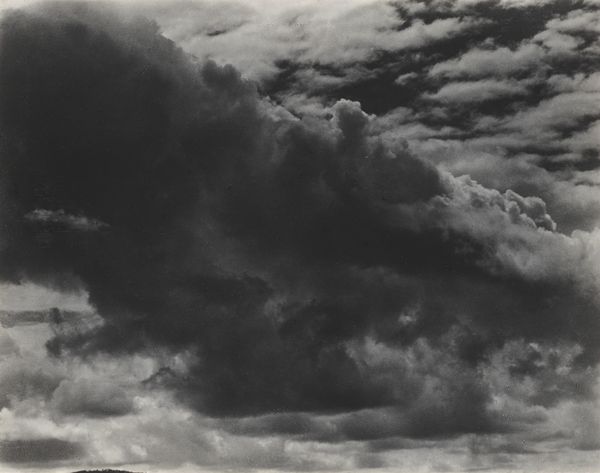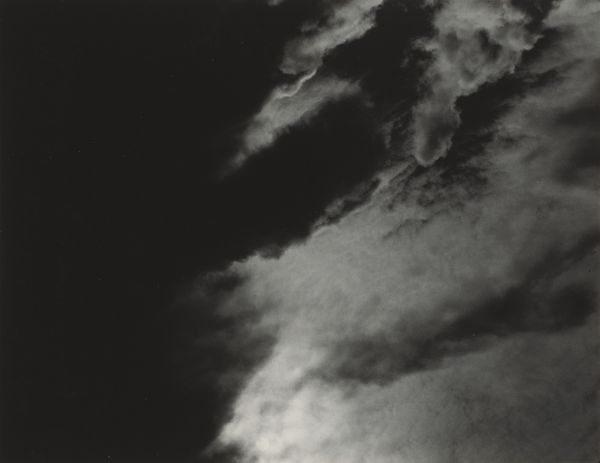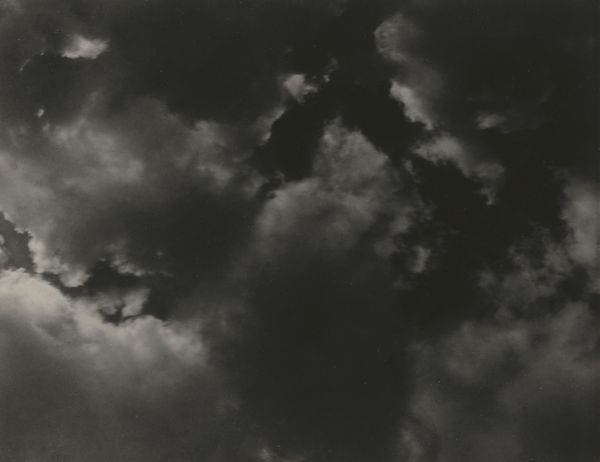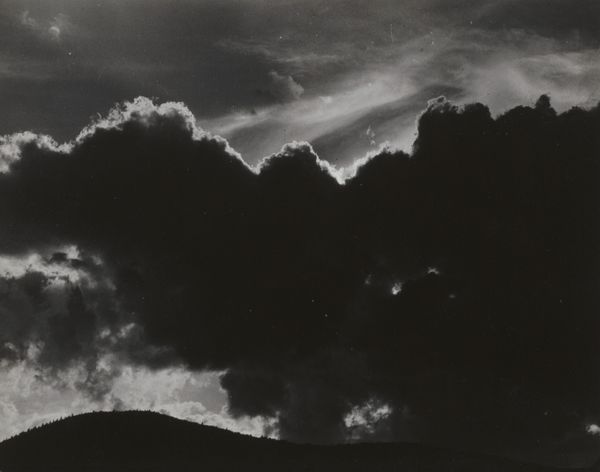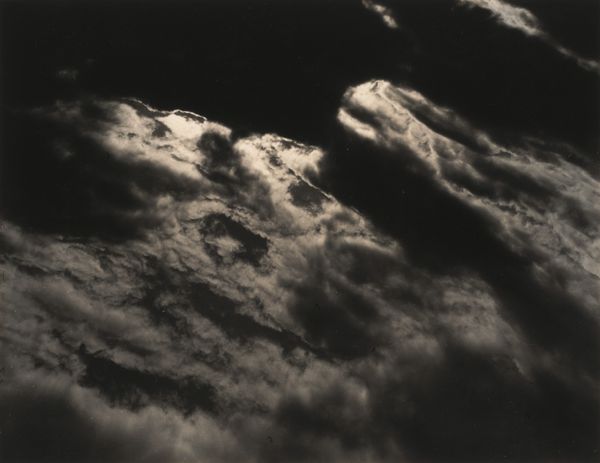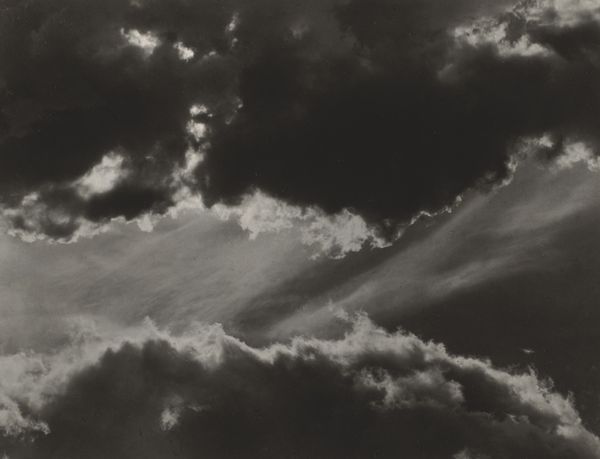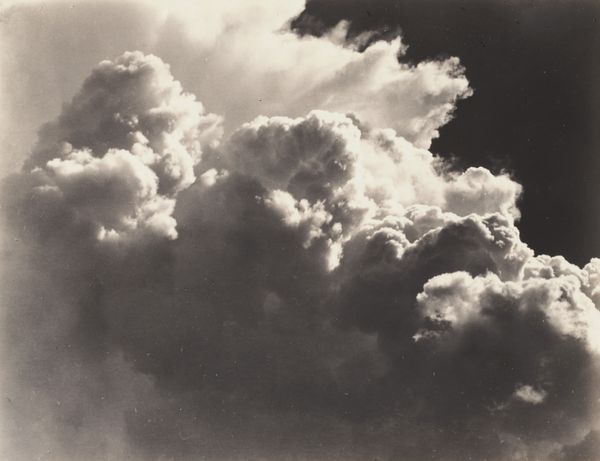
photography, gelatin-silver-print
#
pictorialism
#
landscape
#
photography
#
gelatin-silver-print
#
monochrome photography
#
abstraction
#
modernism
#
monochrome
Dimensions: sheet (trimmed to image): 9.1 x 11.5 cm (3 9/16 x 4 1/2 in.) mount: 34.9 x 27.5 cm (13 3/4 x 10 13/16 in.)
Copyright: National Gallery of Art: CC0 1.0
Curator: This photograph, a gelatin-silver print entitled "Equivalent", was created by Alfred Stieglitz in 1927. Editor: Oh, my! Look at these clouds. It's all billowing shapes, like mountains made of cotton candy…dark, stormy cotton candy. Gives me that dramatic, slightly melancholy feeling. Curator: It's fascinating how Stieglitz used clouds, or what he called "equivalents," to express inner emotional states. These images weren’t simply about representing weather phenomena. They were intended to mirror his feelings and thoughts. Consider how these explorations align with the modernist rejection of traditional subject matter in favor of abstraction and the subjective experience. Editor: So, the clouds are like a code? He’s using nature to show us what’s going on inside his head? Interesting. To me, it also feels timeless, like you could stare at it forever and still not know everything you see. It's not trying to be pretty, which I appreciate. Curator: Exactly. In the context of Stieglitz’s work and his circle, which included artists like Georgia O’Keeffe, we can also see his "Equivalents" as a move away from representational photography towards something more abstract and symbolic, prefiguring later trends in 20th-century art. How these works embody the concept of photographic modernism, emphasizing the formal qualities of the medium. Editor: I dig that! It feels like he is conducting an experiment with the camera as his paintbrush. Stieglitz manages to capture such intense emotion with something as simple as a cloudy sky; kind of a 'less is more' approach that artists these days should reflect on. It really makes you want to grab your own camera and just... look up. Curator: These images remain powerful because they challenge us to find our own “equivalents” in the world around us, seeking out connections between the external environment and our internal states. It certainly has for me. Editor: Well, now I need to go find some epic cloud formations and figure out what they’re saying about my own crazy internal weather system.
Comments
No comments
Be the first to comment and join the conversation on the ultimate creative platform.
